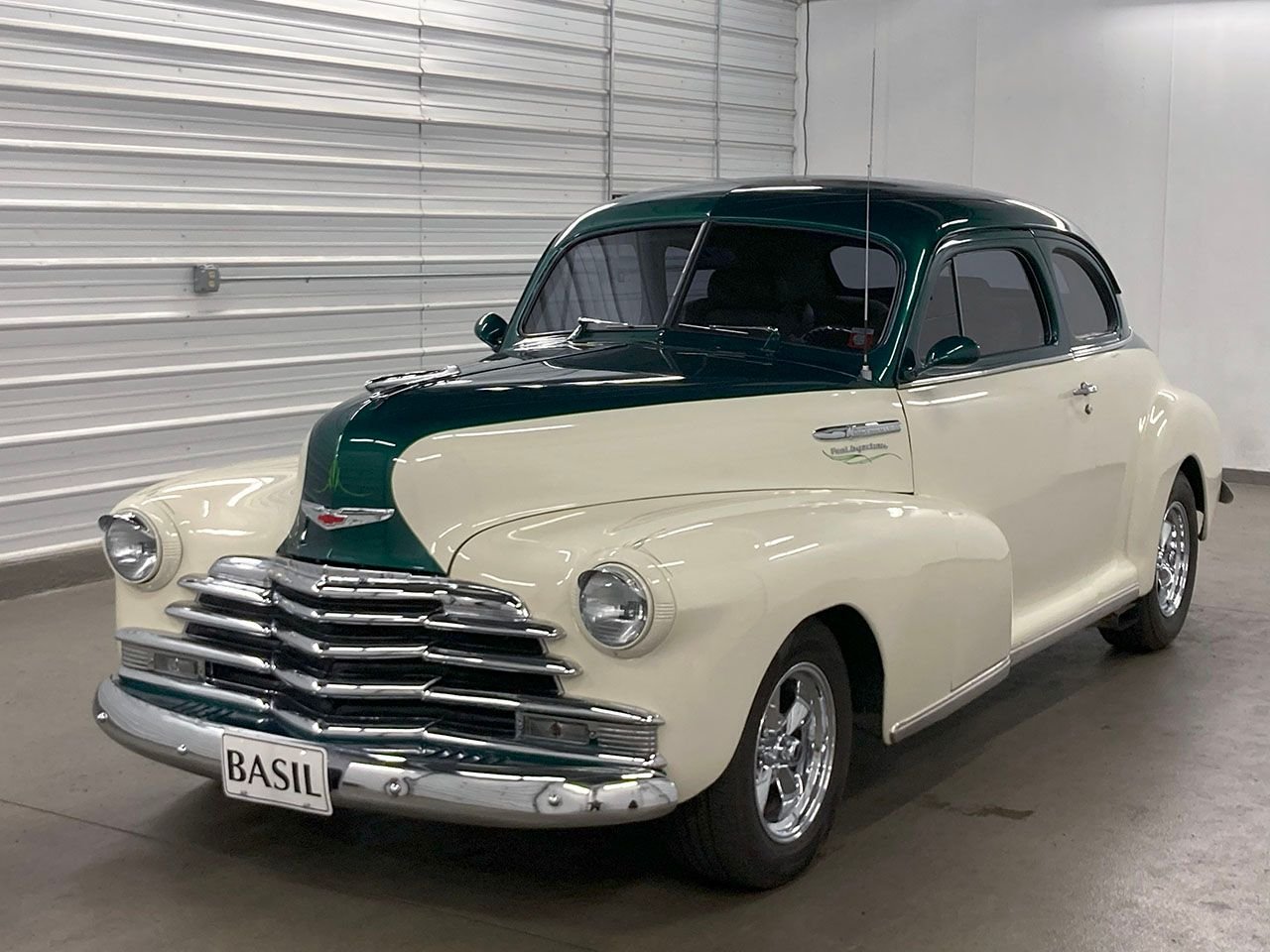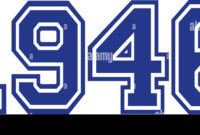1948-53 Chevy Trucks For Sale: Your Comprehensive Guide to Owning an American Icon pickup.truckstrend.com
In the vast landscape of classic American automobiles, few vehicles command as much adoration and enduring appeal as the 1948-1953 Chevrolet Advance-Design trucks. More than mere utility vehicles, these trucks represent a pivotal moment in automotive history, embodying post-World War II optimism, a booming economy, and a fresh approach to design. Their rounded, robust lines and timeless silhouette have cemented their status as true American icons, making them highly sought-after today by collectors, restorers, and enthusiasts alike. Whether you dream of a meticulously restored showpiece, a rugged daily driver with character, or a powerful modern restomod, navigating the market for 1948-53 Chevy trucks for sale requires knowledge, patience, and a keen eye. This comprehensive guide will equip you with the insights needed to embark on your journey to owning a piece of automotive legend.
1948-53 Chevy Trucks For Sale: Your Comprehensive Guide to Owning an American Icon
The Enduring Appeal of Advance-Design: A Post-War Phenomenon
The "Advance-Design" series, introduced in mid-1947 as the first completely new GM truck design after WWII, represented a significant leap forward from its pre-war predecessors. Its name aptly described the improvements: a wider, lower, and longer cab offering significantly more interior space and improved visibility thanks to larger windows. The iconic "fenderless" look, with front fenders integrated into the body, gave it a smoother, more modern appearance. These trucks were built to work, but they also possessed an inherent charm that transcended their utilitarian purpose.
Their popularity today stems from several factors:
- Timeless Aesthetics: The rounded, muscular lines are instantly recognizable and universally admired, lending themselves beautifully to various styles from rat rod to concourse restoration.
- Simplicity and Durability: Built with straightforward mechanicals, they are relatively easy to maintain and repair, even for novice enthusiasts. Their robust construction ensured they stood the test of time.
- Nostalgia: For many, these trucks evoke a sense of Americana, simpler times, and the spirit of hard work and progress.
- Versatility: From classic pickups to panel vans and Suburbans, the Advance-Design platform offered a wide range of body styles, each with its own unique appeal and potential for customization.

Understanding the Model Years: 1948-1953 Breakdown
While often grouped together, the 1948-1953 Advance-Design trucks did undergo minor evolutionary changes. The most significant aesthetic shift occurred mid-1955 with the introduction of the "Task Force" series, making the 1948-early 1955 models distinct.
Key characteristics and minor year-to-year differences within the 1948-53 range include:
- Engines: Predominantly powered by the robust "Stovebolt Six" inline-six engine. The 216 cubic inch version was standard, with a larger 235 cubic inch engine becoming available in later years (particularly for heavy-duty applications and then more widely in 1953 for automatics).
- Transmissions: Most commonly a 3-speed manual transmission shifted on the column. A 4-speed manual (often referred to as a "granny gear" transmission due to its low first gear) was an option for heavier-duty models, shifted on the floor.
- Body Styles: The 3100 (1/2-ton) pickup is the most iconic and popular. Other variations include the 3600 (3/4-ton), 3800 (1-ton), panel trucks, Canopy Express, and the highly desirable Suburban Carryall.
- Grille and Hood Emblems: Subtle changes in grille design and hood emblems (e.g., chrome vs. painted, specific year designations) are often the easiest way to identify specific model years. For instance, the ’53 model featured a new grille and wider parking lights.
- Rear Window: Early models (1948-early 1951) featured a smaller rear window, while later models (late 1951-1953) had a larger, more desirable "five-window" appearance.
Where to Find Your Dream Chevy Truck
The popularity of these trucks means there’s a relatively active market, but finding the right one requires knowing where to look:
- Online Marketplaces:
- eBay Motors: A vast inventory, ranging from barn finds to fully restored examples. Be wary of incomplete descriptions and always ask for more photos/information.
- Craigslist/Facebook Marketplace: Excellent for finding local, often unadvertised gems or projects. Prices can be more negotiable.
- Specialized Classic Car Sites: Hemmings, ClassicCars.com, Bring a Trailer (for higher-end, well-documented sales).
- Dedicated Forums & Social Media Groups: Online communities for Advance-Design owners are invaluable for leads, advice, and direct sales.
- Auctions: Major automotive auctions (Mecum, Barrett-Jackson) often feature high-quality restored or restomodded examples. Smaller local auctions can yield project vehicles.
- Classic Car Dealerships: Reputable dealers specializing in vintage vehicles often have these trucks in stock, typically at a higher price point but often with some level of pre-inspection or reconditioning.
- Word of Mouth & Local Searches: Sometimes the best finds come from unexpected places – an old farm, a forgotten garage, or a casual conversation at a local car show.
What to Look For: A Buyer’s Checklist
Purchasing a vintage vehicle is an investment, and thorough inspection is paramount. Bring a knowledgeable friend or mechanic if possible.
- Rust, Rust, Rust: This is the primary enemy. Check:
- Cab: Cab corners, floor pans (especially under the mat), kick panels, door bottoms, cowl area, roof seams.
- Fenders: Inner and outer wheel wells, mounting points.
- Bed: Bed floor (especially where wood meets metal), inner fenders, tailgate.
- Running Boards: Prone to rust from road spray and pooling water.
- Frame: Inspect the entire frame for bends, cracks, previous repairs, and significant rust pitting, especially near suspension mounting points.
- Body Integrity: Look for signs of major accidents, poor bondo work, wavy panels, or misaligned doors/hood/tailgate. Check door gaps.
- Drivetrain:
- Engine: Listen for unusual noises (knocking, ticking), excessive smoke from the exhaust (blue for oil, white for coolant), fluid leaks. Check oil and coolant levels.
- Transmission: Check for smooth shifting, grinding, or slipping.
- Differential: Listen for whining noises, especially during deceleration.
- Originality vs. Swaps: Decide if you want the original Stovebolt or a modern V8/V6 swap. If swapped, ensure the work was done professionally.
- Suspension & Steering: Check for excessive play in the steering wheel, worn ball joints/tie rods, worn leaf springs (sagging), and leaky shock absorbers.
- Brakes: These trucks originally had drum brakes all around. Test them for stopping power and pull. Many have been upgraded to disc brakes for safety.
- Electrical System: Check all lights, gauges, wipers, and horn. Look for frayed or patched wiring, which can be a fire hazard. Many owners upgrade to 12-volt systems from the original 6-volt.
- Interior: Assess the condition of the seat upholstery, dash (cracks, modifications), gauges (working?), and door panels.
- Paperwork: Ensure the title is clear, matches the VIN on the truck, and is in the seller’s name. Check for any liens.
Restoration vs. Restomod vs. Driver: Choosing Your Path
Deciding what kind of truck you want is crucial, as it dictates your budget and search criteria.
- Full Restoration (Concourse): Aims for absolute authenticity, often using original or NOS (New Old Stock) parts. Every nut and bolt is correct to factory specifications. This is the most expensive and time-consuming route, appealing to purists and those entering show competitions.
- Restomod (Modern Performance/Comfort): The most popular choice for these trucks. It combines the classic exterior with modern mechanicals: V8 engine swaps, automatic transmissions, power steering, power brakes (disc), air conditioning, independent front suspension (IFS), and updated wiring. Offers daily drivability, comfort, and performance.
- Driver Quality: A truck that runs and drives safely, perhaps with some cosmetic imperfections ("patina"). It’s ready to enjoy immediately without the pressure of being perfect. These are often the best value and allow for gradual upgrades.
- Patina Preservation: A growing trend where the truck’s aged, weathered paint and minor surface rust are clear-coated and preserved, embracing its history rather than erasing it. Often combined with modern mechanicals (restomod).
- Project Vehicle/Barn Find: The cheapest entry point, but requires significant time, money, and skill. Be realistic about your abilities and resources.
Budgeting for Your Advance-Design Adventure
The cost of a 1948-53 Chevy truck varies wildly based on condition, originality, and the level of restoration or modification.
| Model Year | Model | Condition: Barn Find/Project | Condition: Driver/Light Restoration | Condition: Restomod/Show Quality |
|---|---|---|---|---|
| 1948-1953 | 3100 (1/2-ton) Pickup | $5,000 – $15,000 | $15,000 – $35,000 | $35,000 – $100,000+ |
| 1948-1953 | 3600 (3/4-ton) Pickup | $4,000 – $12,000 | $12,000 – $30,000 | $30,000 – $80,000 |
| 1948-1953 | 3800 (1-ton) Pickup/Chassis | $3,000 – $10,000 | $10,000 – $25,000 | $25,000 – $70,000 |
| 1948-1953 | Panel Truck | $6,000 – $18,000 | $18,000 – $40,000 | $40,000 – $120,000+ |
| 1948-1953 | Suburban | $10,000 – $30,000 | $30,000 – $70,000 | $70,000 – $150,000+ |
Note: Prices are highly variable and depend on location, originality, specific modifications, and market demand. These are general estimates as of late 2023/early 2024. A rare option or specific historical provenance can significantly increase value.
Beyond the purchase price, budget for:
- Restoration Costs: Paint, bodywork, engine rebuilds, interior, chrome plating – these can quickly exceed the truck’s initial value.
- Parts: While good availability exists, parts still cost money.
- Insurance: Classic car insurance is often cheaper than standard auto insurance but requires specific appraisal and usage rules.
- Maintenance: Even a well-restored truck will require ongoing care.
- Unexpected Repairs: Always have a contingency fund.
Tips for a Successful Purchase
- Do Your Homework: Research specific year differences, common problem areas, and average market values for various conditions.
- Set a Realistic Budget: And stick to it. Factor in not just the purchase price, but also transportation, registration, insurance, and any immediate repairs or upgrades.
- Inspect Thoroughly: Never buy sight unseen if possible. If you must, demand extensive high-resolution photos and videos, and consider hiring a professional pre-purchase inspector.
- Join Online Communities: Forums and Facebook groups are invaluable resources for advice, finding parts, and even leads on trucks for sale.
- Be Patient: The right truck at the right price may not appear overnight.
- Don’t Be Afraid to Negotiate: Most sellers expect some negotiation, especially on private sales.
- Verify Documentation: Ensure the title is clean and matches the VIN. A clear title is paramount.
Common Challenges and Solutions
- Rust: The biggest challenge. Solutions range from patch panels and floor replacements to full body-off restorations. Many reproduction body panels are available.
- Original Drivetrain Limitations: The Stovebolt Six is reliable but not powerful by modern standards. Drum brakes are adequate but lack modern stopping power.
- Solution: Engine/transmission swaps (SBC V8, LS engines are popular), disc brake conversions, power steering, and independent front suspension (IFS) kits drastically improve drivability and safety.
- 6-Volt Electrical System: Original 6-volt systems can be finicky.
- Solution: Conversion to a 12-volt system (new battery, alternator, starter, gauges, lights) is a common and highly recommended upgrade.
- Parts Availability: While many reproduction parts are available, finding specific NOS or original parts can be challenging and expensive.
- Solution: Leverage online communities, swap meets, and specialized classic truck parts suppliers.
Frequently Asked Questions (FAQ)
Q: What makes these trucks "Advance-Design"?
A: "Advance-Design" refers to Chevrolet’s first completely redesigned post-WWII trucks, featuring a wider, longer, and lower cab, improved visibility, and a more integrated, streamlined body style compared to pre-war models.
Q: Are parts hard to find for 1948-53 Chevy trucks?
A: No, due to their immense popularity, there’s an excellent aftermarket for reproduction parts, including body panels, trim, interior components, and mechanical parts. Used original parts are also available through salvage yards and online communities.
Q: Can I daily drive a 1948-53 Chevy truck?
A: An original, un-modified truck would be challenging as a daily driver due to slow speeds, manual steering, drum brakes, and lack of modern amenities. However, many owners perform "restomods" with modern engines, transmissions, power steering/brakes, and AC, making them very capable daily drivers.
Q: What’s the difference between a 3100 and a 3600?
A: The numbers refer to the truck’s hauling capacity: 3100 is a 1/2-ton, and 3600 is a 3/4-ton. The 3600 typically has a longer bed and heavier-duty suspension components.
Q: Should I buy a restored truck or a project?
A: It depends on your budget, skills, and time. A restored truck is more expensive upfront but ready to enjoy. A project is cheaper to buy but will cost significantly more time and money in restoration. Often, buying a well-done driver or light restoration is the most cost-effective path.
Q: What’s a "Stovebolt Six"?
A: The "Stovebolt Six" is the nickname for Chevrolet’s inline-six cylinder engine, a workhorse that powered millions of Chevy vehicles for decades. Known for its rugged reliability, it was the standard engine in these trucks.
Q: What are common upgrades for these trucks?
A: Popular upgrades include V8 engine swaps (SBC or LS), automatic transmissions, power steering, disc brake conversions, independent front suspension (IFS), 12-volt electrical conversions, air conditioning, and modern wiring harnesses.
Conclusion
The 1948-53 Chevy Advance-Design trucks are more than just old vehicles; they are rolling pieces of American history, canvases for personal expression, and gateways to a passionate community of enthusiasts. Whether you’re seeking a pristine show truck, a custom hot rod, or a charming driver with patina, the journey of acquiring and owning one of these iconic pickups is deeply rewarding. By understanding their history, knowing what to look for, and planning your budget effectively, you can confidently navigate the market and find the perfect 1948-53 Chevy truck to call your own. It’s not just about buying a vehicle; it’s about investing in a legacy and creating new memories with a timeless classic.





